The Independent's journalism is supported by our readers. When you purchase through links on our site, we may earn commission.
Plight of the pachyderms: How data, technology and women have eliminated Tsavo’s poaching problem
As World Elephant Day shines a light on the importance of protecting the gentle giants, Sue Watt meets the team of rangers using a clever combination of military intelligence, Maasai communities and tourism to combat the threat in Kenya’s biggest national parks
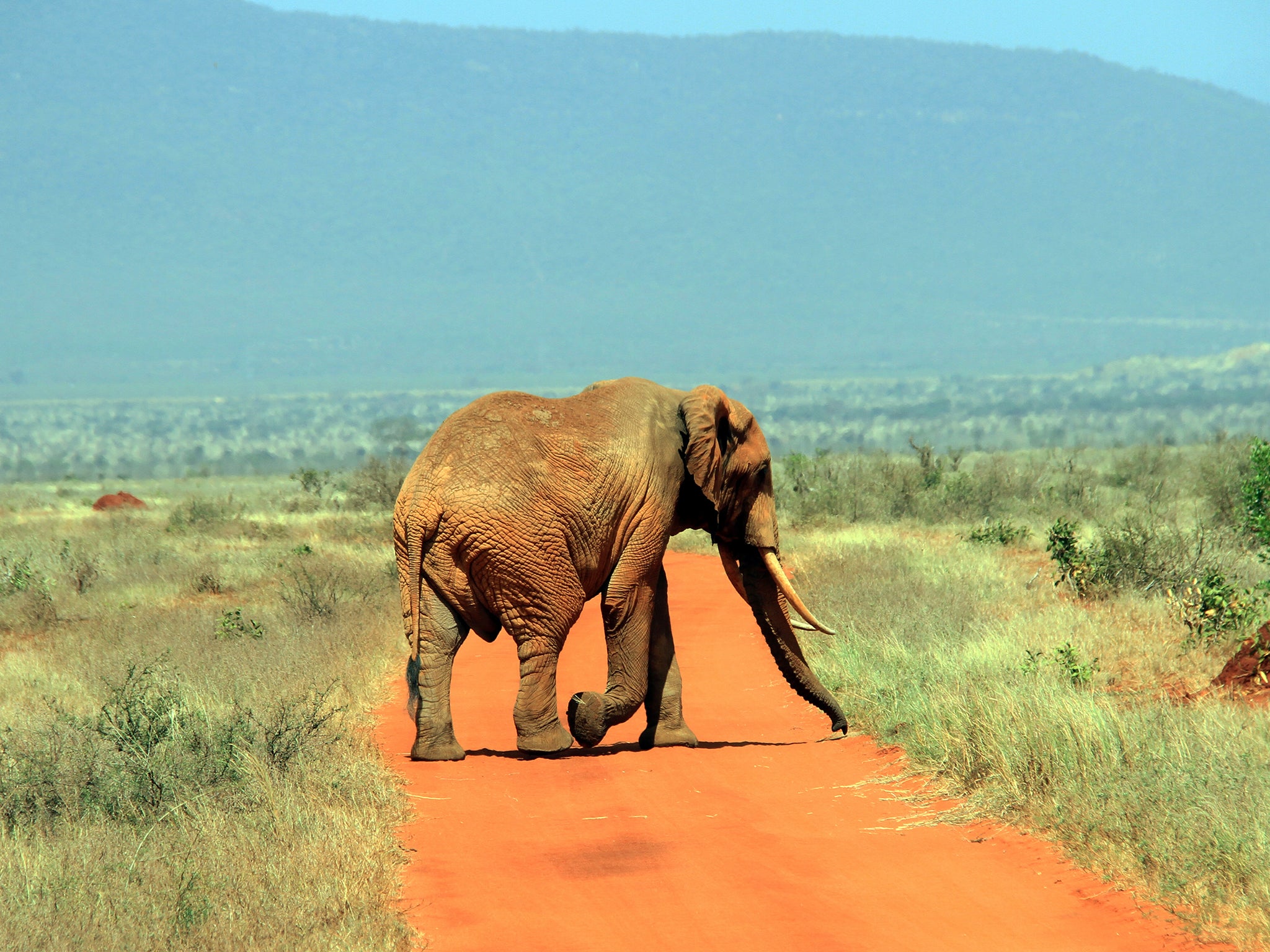
Driving along vivid terracotta-coloured tracks that cut a swathe through Tsavo’s vast plains, we’re searching for one very special lady. Her name is Dida and she’s a “big tusker”, one of only 30 elephants of her kind left in the world.
Her extraordinary tusks sweep all the way to the ground, each weighing at least 45kg. It’s those enormous ivory incisors that make her so rare. Kenya is home to 10 big tuskers along with 26 “emerging tuskers” who will eventually join the ranks of their elders as their tusks develop. Generations ago, elephants like Dida were regularly seen around southern Kenya’s expansive savannahs, majestic and seemingly indomitable, parading the plains as if they owned them. Then the poachers came.
Tomorrow, World Elephant Day will highlight the plight of pachyderms across the globe. Africa’s elephant population has dwindled from around 10 million a century ago to some 352,000 counted in the Great Elephant Census of 2016. Around 30,000 are poached annually while others are lost through natural deaths, drought, habitat loss and ever-increasing human-wildlife conflict. So how can we turn the tide on their tragic demise?
Tsavo’s tenBoma and tourism
The International Fund for Animal Welfare (IFAW) has some answers. Their “tenBoma” initiative in the Tsavo Conservation Area (TCA) is breaking new ground, preventing poaching before it happens through a clever combination of military intelligence techniques, Maasai communities and tourism.
Since 2017 Tui Travel’s charitable arm, the Tui Care Foundation (TCF), has been contributing to tenBoma through their Elephant Aid Programme, which has provided almost €500,000 worldwide to projects protecting elephants. Elise Allart, the company’s Programmes and Operations Director, explains: “Tui Elephant Aid was implemented in southeast Asia and Africa, two regions exposed to different threats and offering different challenges for elephant protection. Yet in both, we believe tourism can be a force for good, affecting real, long-lasting change.”
TenBoma takes its name from an east African saying that a community becomes stronger when 10 houses (or bomas) work together, looking out for each other. It’s the brainchild of Faye Cuevas, IFAW’s senior vice president. She’s a lieutenant colonel in the US air force reserves and a former intelligence officer supporting counter-terrorism operations in Africa and the Middle East. Now she’s applying her formidable military experience to the fight against elephant poaching, adding a new dimension to the work of the Kenya Wildlife Service (KWS), which protects the country’s national parks.
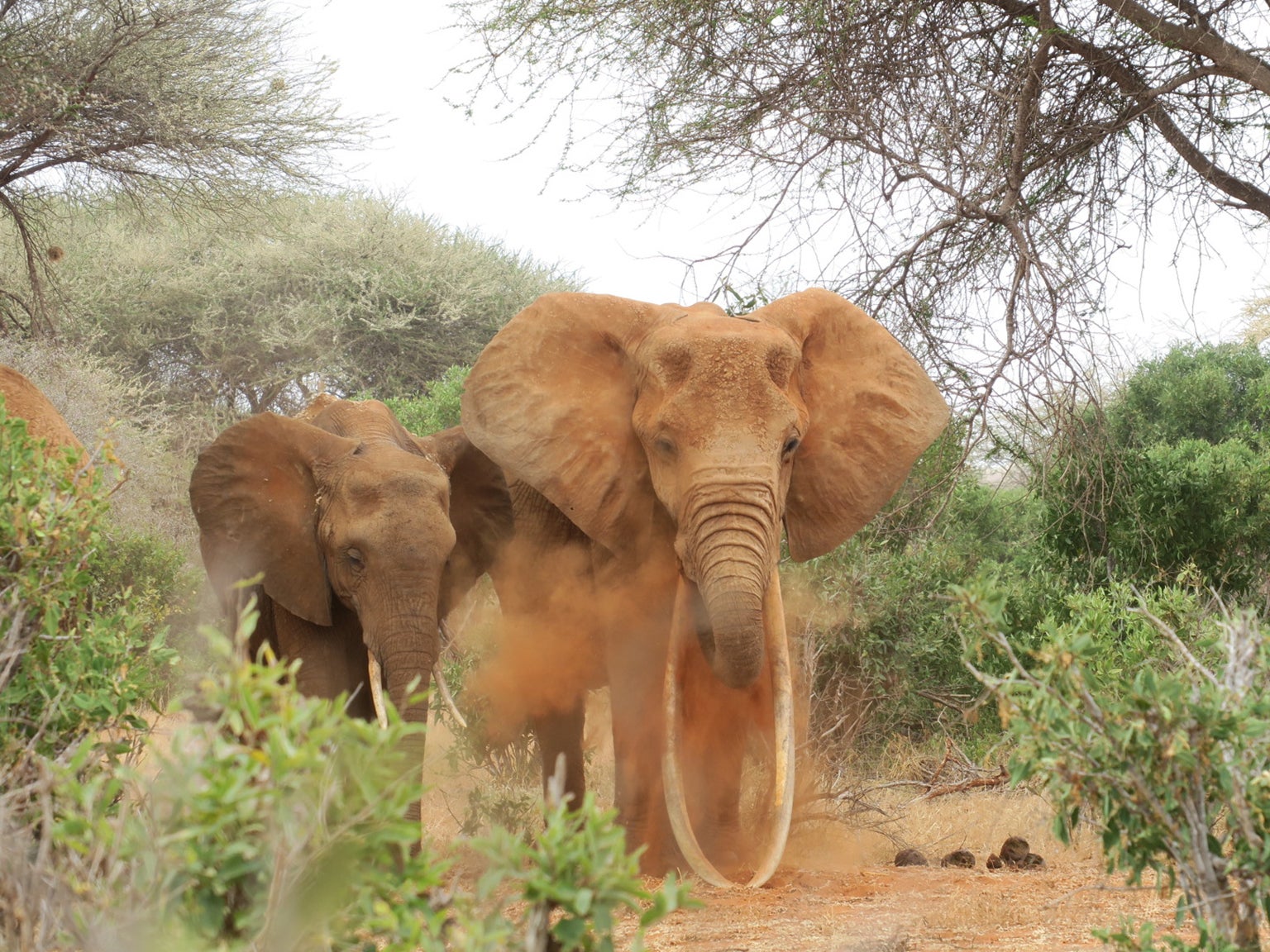
The Tsavo eco-system includes Tsavo East and Tsavo West National Parks along with a tapestry of Maasai communal lands, privately-owned ranches and wildlife conservancies. At 42,000sq km, it’s vast, roughly the size of Switzerland, and is home to nearly 13,000 elephants, a staggering 40 per cent of Kenya’s entire population.
Tsavo East, Kenya’s biggest park, consists mostly of flat plains speckled with scrub, stretching for miles to the Sagala Hills in the distance. Driving to KWS Headquarters at Voi, we spot grumpy buffalo, zebra, frisky gazelle, ostriches, warthogs and hartebeest. We see elephants everywhere too, mums, babies, aunties and adolescents in cow herds and lone bulls, all tinged red from Tsavo’s soils.
Their home is a precarious place. The parks are unfenced and have just 270 rangers between them. Elephants wander freely through communal lands, raiding crops and causing havoc for local Maasai. The poacher’s weapon of choice is poisoned arrows – silent and swift, they’re harder to detect than bullets. And the parks are bisected by the Nairobi to Mombasa highway, where a massive port crammed with container ships draws lorries from across east Africa, creating a major hub for the illegal wildlife trade.
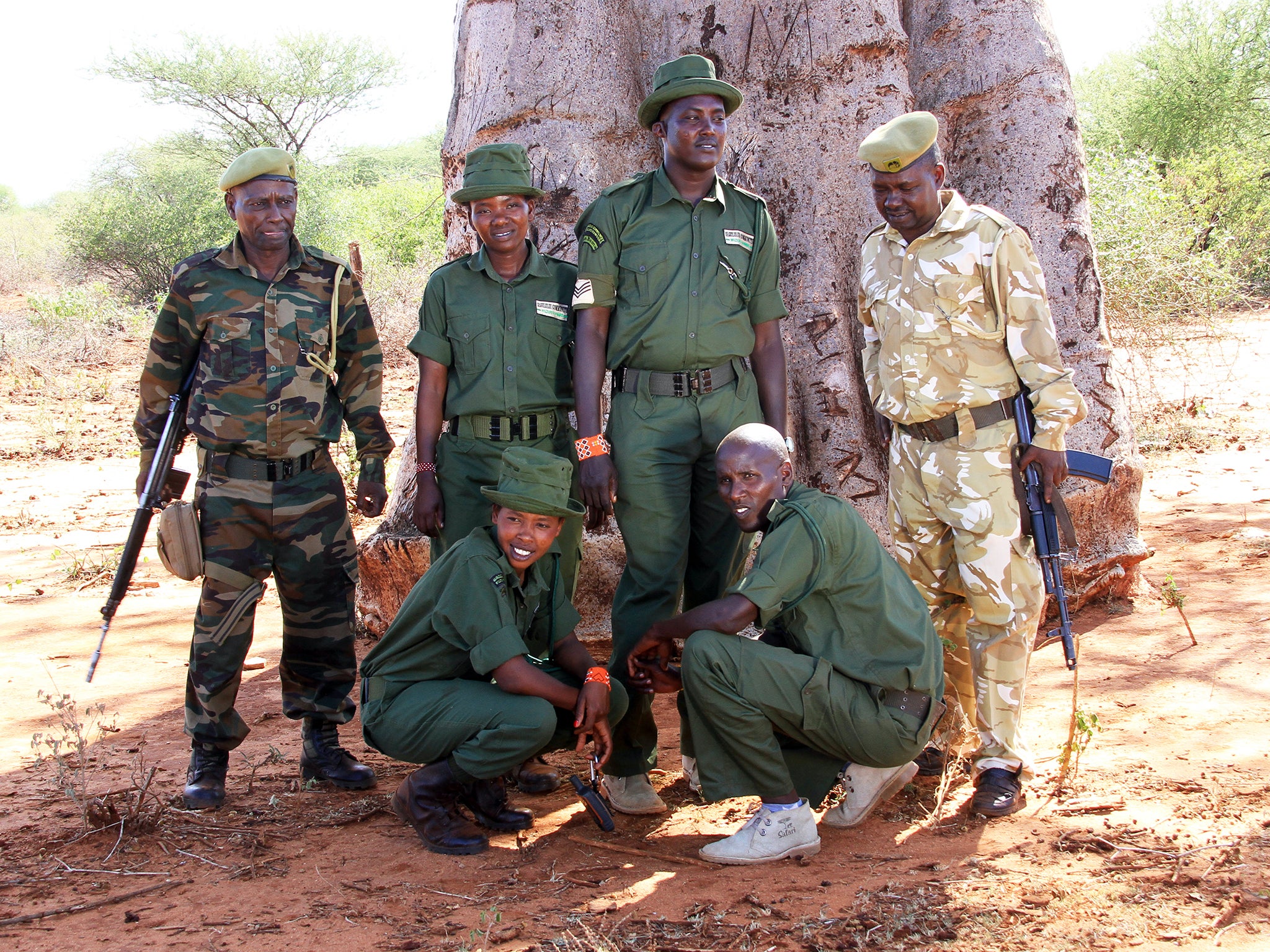
At the park HQ, Faye and Daniel Osuri, KWS assistant director for Tsavo, tell tenBoma’s story. Before the project started in 2015, the under-resourced KWS had filing cabinets full of yellowing logbooks and dusty crime reports. “To get ahead of poaching networks, we needed to get that data literally out of the storerooms and onto a visualisation platform to build a picture of all the information, to see where the hotspots were,” Faye explains.
The poacher’s weapon of choice are poisoned arrows – silent and swift, they’re harder to detect than bullets
It took a year to digitise the records and map the poaching incidents. “Then we put investigators and rangers in those hotspots where we knew, based on six years of data, there was a temporal uptake of poaching activity. Because of that, we zeroed out poaching in 2016 – that was huge.”
Before this, KWS was reactive to poaching, recording incidents after the event. “By then it’s already a conservation loss, we’ve already lost the elephant and its tusks,” Faye continues. “But since 2015, poaching has almost stopped in the TCA – it’s down about 85 per cent.”
There are still poaching incidents – three cases were recorded in Tsavo between May and June – but nothing like the scale of previous years. And elephant numbers are rising. “Since we partnered with Tui, the last census showed there’s been almost a 15 per cent increase in Tsavo’s elephant population, another 1700 elephants, so that’s massive,” Faye confirms.
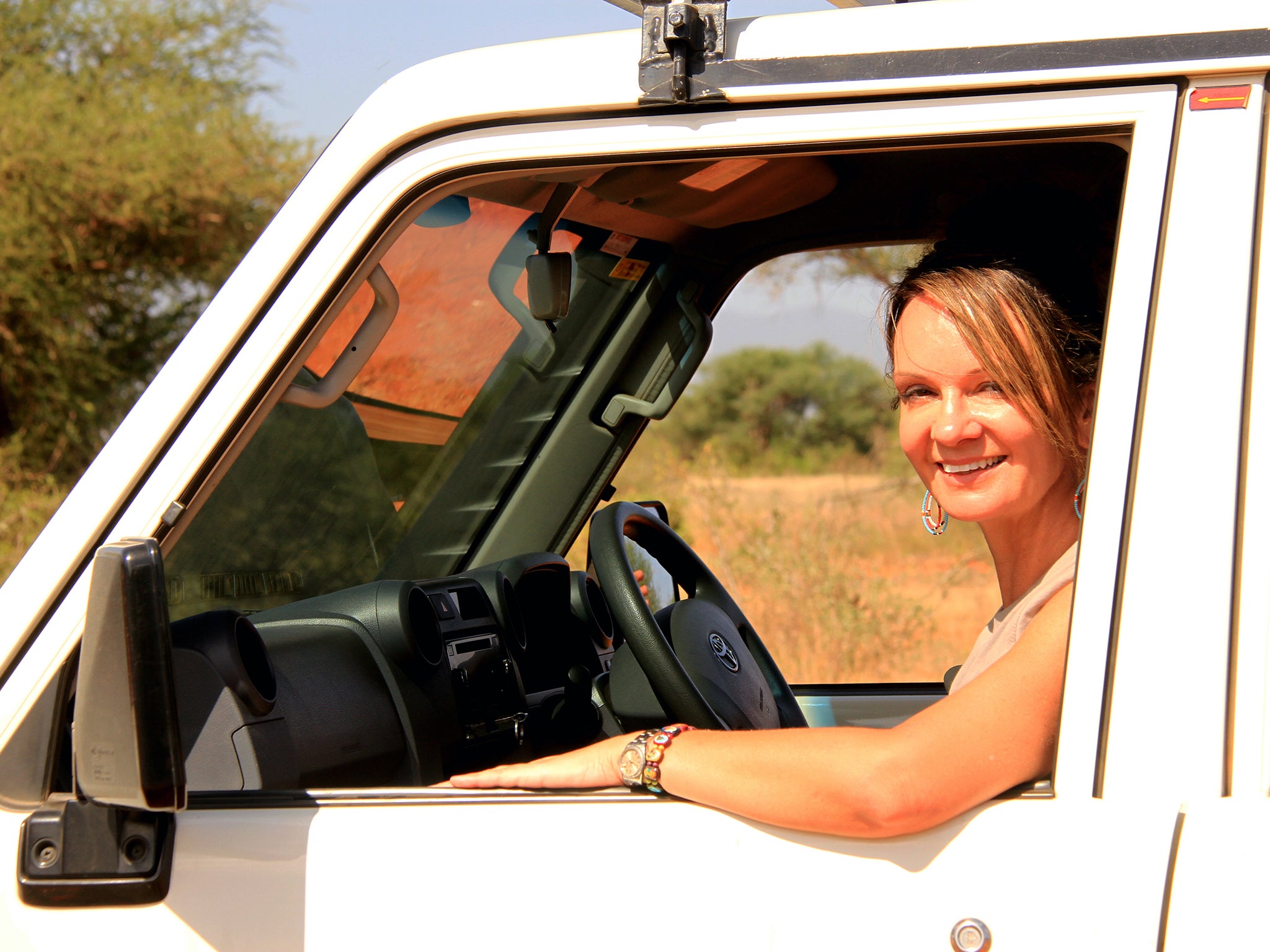
This proactive approach demanded increased patrols and better investigations, and that’s where Tui stepped in. TCF provided KWS with motorbikes, GPS, mobile phones, binoculars and digital forensics software. They also funded training on forensic analysis and evidence gathering, including managing crime scenes, collecting samples and conducting mock trials to increase the chances of convictions.
Patrols beyond the parks
But much of the Tsavo Conservation Area lies beyond the national parks in Maasai heartlands where community rangers rather than the KWS protect the wildlife. Maasai are pastoralists whose lives revolve around cattle: when pastures are sparse, they’ll lead their herds into the parks – illegally – for better grazing.
In relentless heat, I join a short foot patrol with community rangers. They’re also part of tenBoma: their boots, binos, smartphones, iPads, cameras and camping gear are all funded by TCF. On a regular patrol, teams of at least four might walk unarmed for 20km in an eight-hour shift. Today, an armed KWS ranger accompanies us.
“We work closely with KWS, so if we sense danger, we radio our GPS points and patrol together,” Wilson, a community ranger, explains. We walk quietly, checking for tell-tale signs of illegal or animal activity on the dry, baked earth. We find footprints and lion prints close by, and I’m relieved to hear they’re about two days old. “If we see footprints, we’ll take GPS coordinates and come in darkness to see if there are lights – poachers kill using lights at night.”
Every day, they collate all the data about wildlife they see, cattle grazing, and reports from local people. “If the community see an elephant carcass, they report it,” Wilson continues. “We investigate with KWS – was it speared or shot or a natural death? Is there evidence of a weapon? We feed everything back into the tenBoma system.”
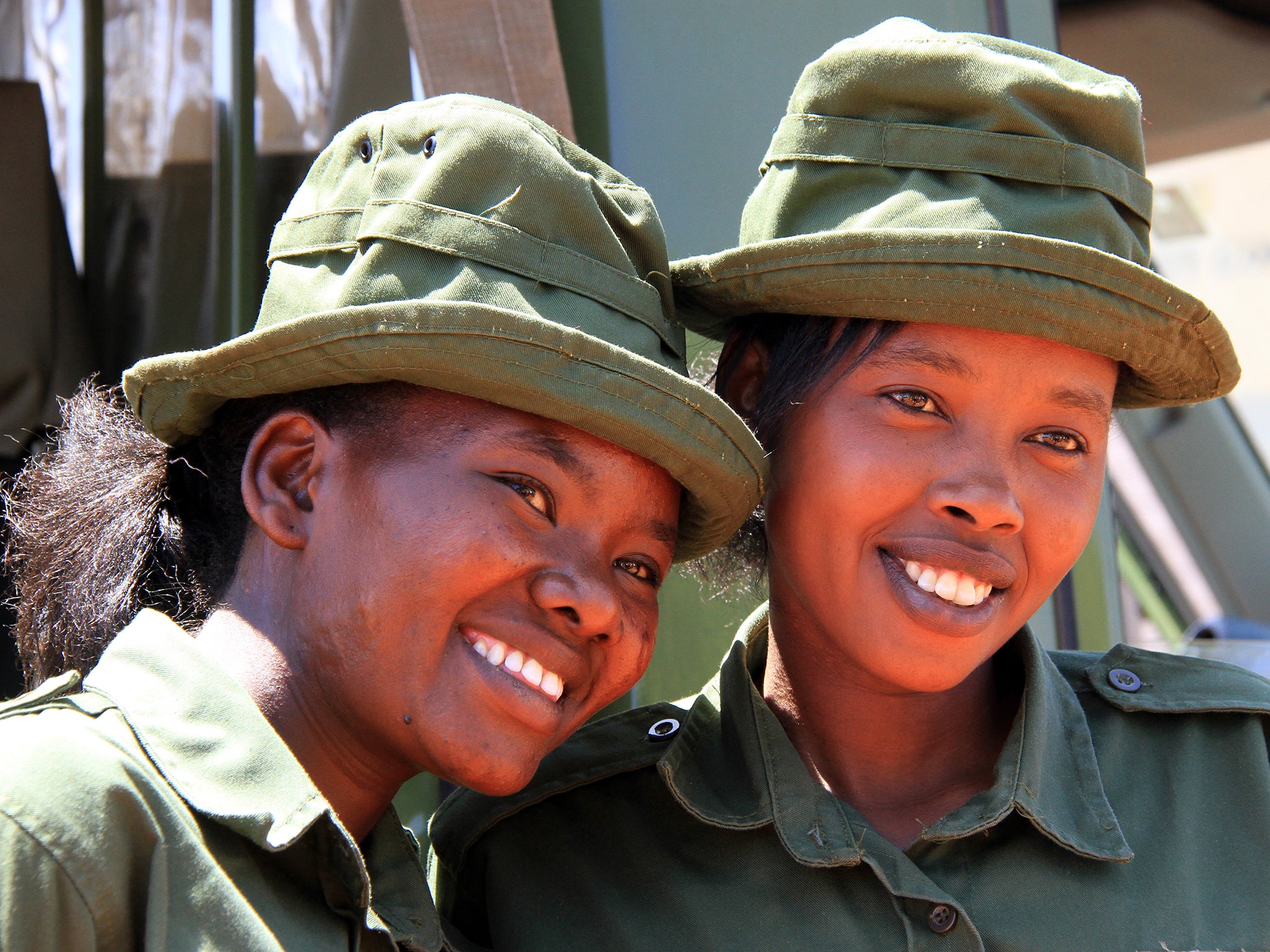
On our patrol are two Maasai women, Eunice and Purity. In their early 20s, they’re members of the new Team Lioness, the first all-female rangers’ group in the region. They don’t seem at all daunted. “Men can do this job, but women do it better,” Eunice laughed. “We like our community and want to help them. We also know the importance of animals and want to conserve them.”
Women are becoming a central piece in the tenBoma jigsaw. “As a 22-year military veteran, I know the value women bring to the enforcement sector,” Faye says. “Local women know what’s happening on the ground. But culturally, they’re more comfortable reporting to other women so it’s vital there are females on the community ranger team they can talk to.”
Pachyderm partners
Later, we continue our search for Dida with a monitoring team from Tsavo Trust, an excellent NGO which works with KWS and tenBoma in protecting the pachyderms. We spot a huge bull in the distance mooching languidly towards us, his enormous terracotta-tinged tusks shining in the sun. Eventually, after waiting quietly, we get a clearer look as he moves closer. While his tusks seem massive, they’re small fry in this land of giants: he’s just a “regular bull”.
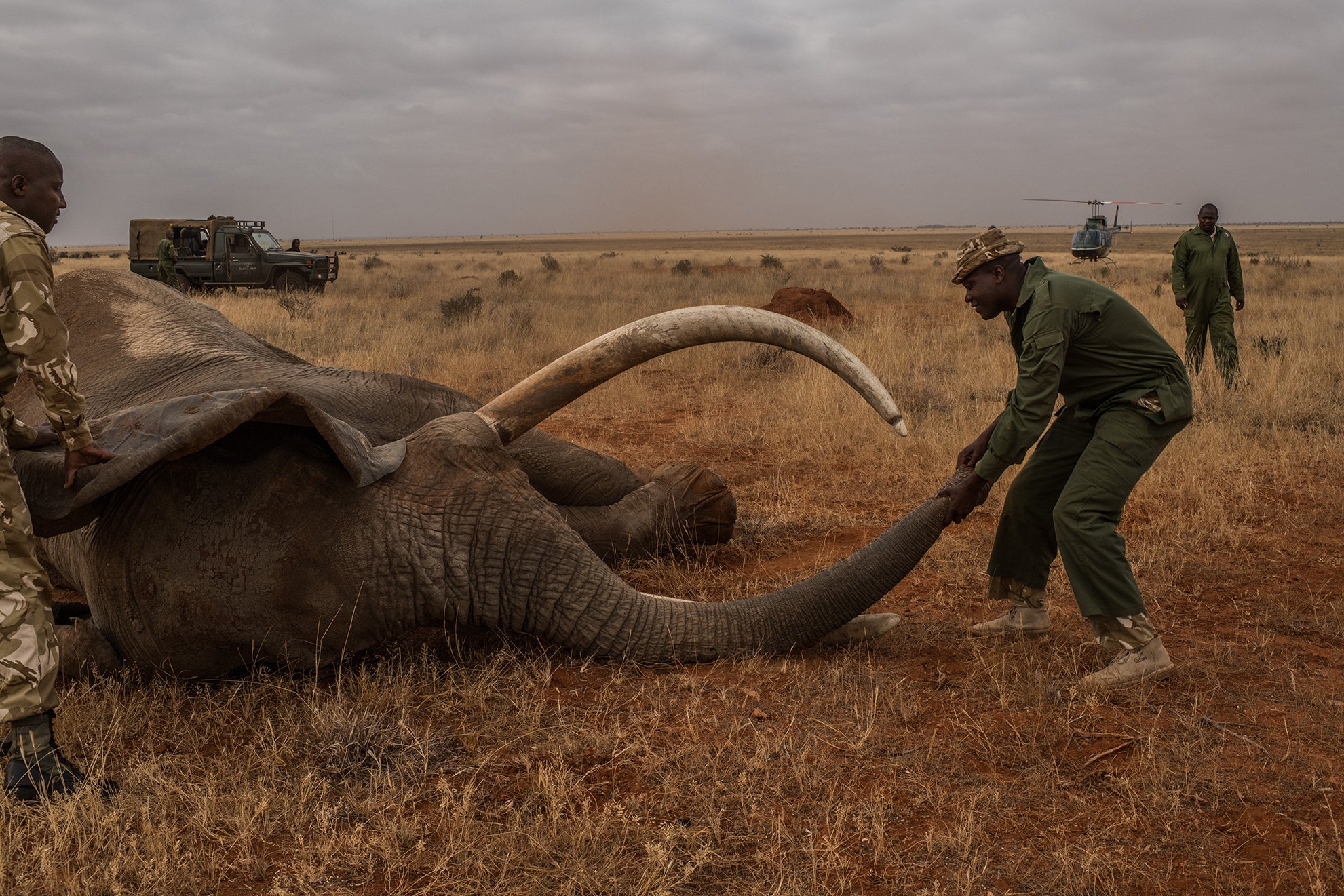
That makes him marginally less attractive to poachers: tuskers are far more vulnerable. Much-loved Satao, believed to have had the world’s biggest tusks, was killed by poachers using poisoned arrows in 2014. Three years later, his namesake Satao II suffered the same cruel fate. And in May this year, Wide Satao and two other elephants were found struck by poisoned arrows. Thankfully, they were saved by Tsavo Trust and KWS, whose vet successfully removed the arrowheads.
We work closely with KWS, so if we sense danger, we radio our GPS points and patrol together. If we see footprints, we’ll take GPS coordinates and come in darkness to see if there are lights – poachers kill using lights at night
Dida eludes us but we see plenty of elephants at our hotel, the Sarova Salt Lick Game Lodge. An unusual construction of 90 round rooms in two-storey buildings on high wooden walkways, its beauty lies in the waterholes and “moat” around the main building that attract masses of wildlife.
“Tsavo’s an important destination for Tui,” Elise Allart tells me the following morning as we drive through Tsavo West National Park to visit some Maasai communities. Smaller than its eastern sister, Tsavo West is hilly and wooded, interspersed with lakes, volcanic lava flows and views of Kilimanjaro towering in the distance.
“We want to help people thrive in areas where we work and tenBoma, with its innovative and inclusive approach, was perfect for TCF,” she says. “The communities are the eyes and ears of this project.”
Maasai and community collaboration
For all the innovative technology and techniques, it is ultimately communities that hold the key to conservation success: without them onside, and without wildlife having a greater value to them alive than dead, conservation will fail. Here in Taita Taveta county, home to some 300,000 people, tenBoma works with 15 communities.
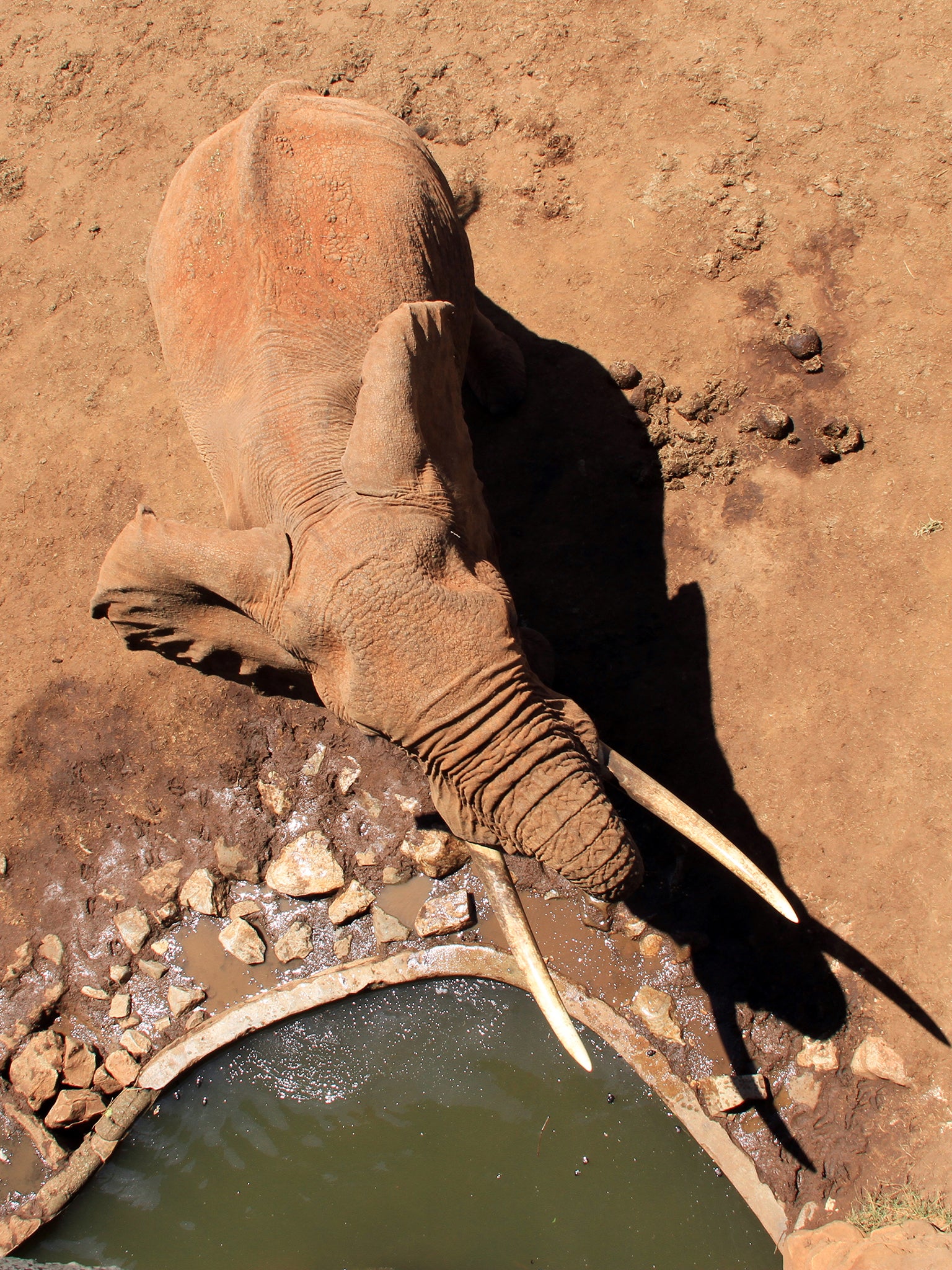
“The idea is to build a pipeline of information and intelligence from the bottom up – from communities to local rangers to wildlife services to police and regional taskforces,” Faye explains. Crucially, the community rangers come from within these Maasai villages, so they’re trusted by local people.
Information lies at the heart of tenBoma’s success in intercepting poachers before they strike. It might come from sophisticated data analysis, from informant networks or even from village chitchat – usually poachers are outsiders. Unfamiliar tyre tracks, campfires or suspicious people in the area; elephants destroying crops or moving around villages, raising tensions; Maasai herders, often infiltrated by poachers, illegally grazing cattle in the parks. All these sometimes small details can reap substantial rewards in the fight against poaching.
In August 2018, for example, a villager from Rombo gave a tip through the reporting pipeline about suspicious people near Tsavo. This led to KWS arresting three traffickers with 234kg of ivory worth around $160,000, and to the subsequent arrest of an Italian ivory buyer just outside Nairobi.
But how do you persuade local people to give that information when their lives are so often blighted by elephants?
I’ve come to a Maasai community meeting outside Taveta town, held as is traditional under the shade of a huge tree. It’s attended by elders, morans (warriors), and local men and women, along with KWS wardens, community rangers and tenBoma.
Moses Merin, a local Maasai and tenBoma’s community outreach officer, interprets as I chat to Mary, a mother of four whose stepfather and cousin were killed by elephants. “I was angry and disappointed – it was so painful,” she says quietly, her eyes distant and sorrowful. “Elephants are good animals but they kill, they attack. They block the way when my children walk to school. At night, they raid our crops. But I’ve never thought of killing them. Elephants are rare. They bring tourists and income; we get developments from well-wishers coming to help our communities – these benefits are because of the elephants.”
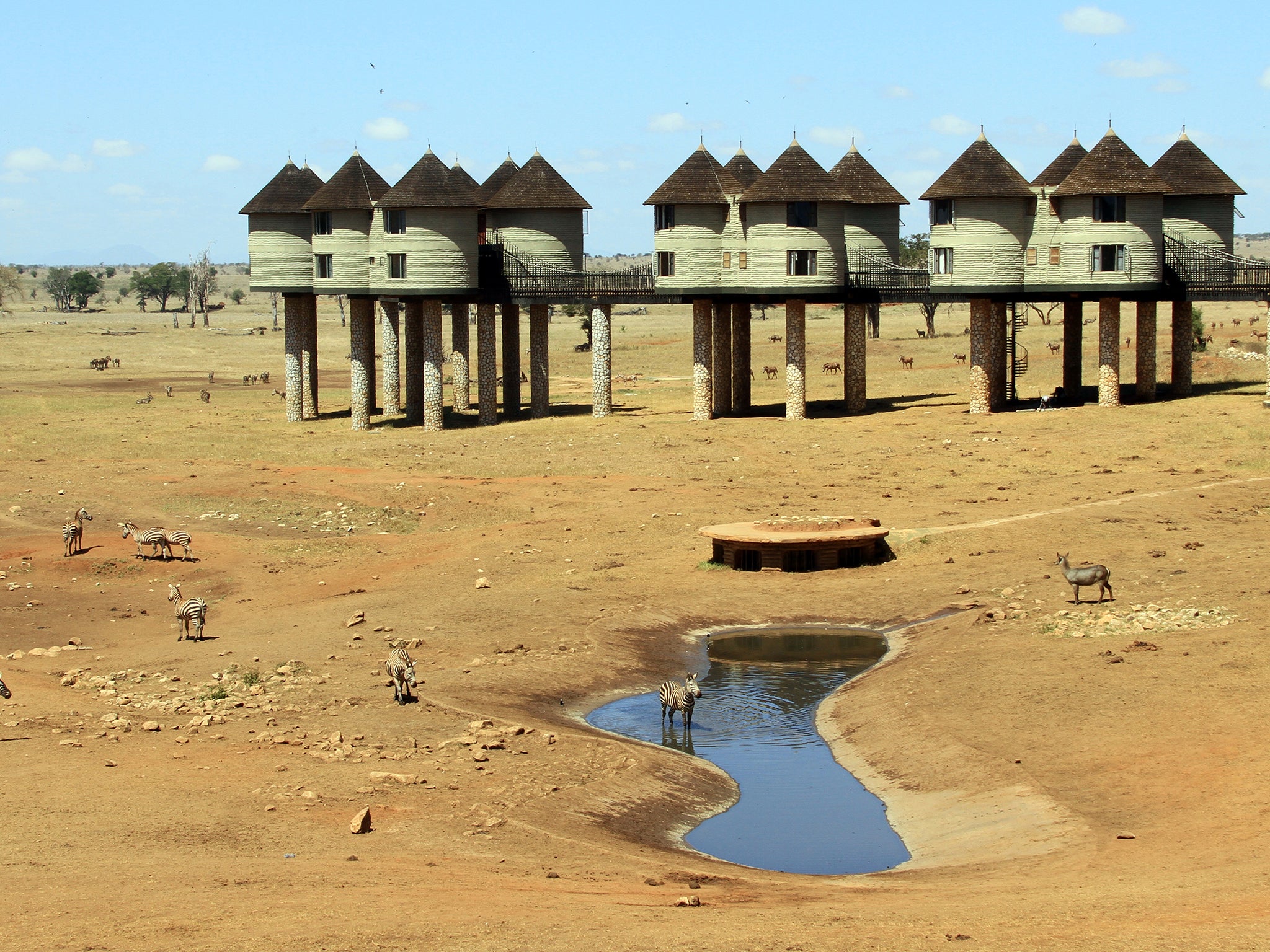
Tui supports the communities by funding tools to mitigate human-elephant conflict that include bright torches and powerful airhorns. Elephants fear the noise from horns so move on, allowing children to go to school again. They don’t like bright torchlight at night, so they stop raiding crops, enabling a family to eat. Of course, these tools aren’t a panacea to all the problems elephants cause and they may seem simple, but they help save lives in Tsavo.
As we return to our hotel, Dida and her fellow tuskers remain elusive. But we’re greeted by hundreds of elephants taking turns to drink from the moat, so close I can hear every slurp and splash. Like a grand finale, the cast of tiny babies, huge bulls and every size in between are a joy to watch. I see their beauty and their gentleness, their power and their wisdom. They may not be the celebrity tuskers we were searching for, but they all have a starring role in Tsavo.

Join our commenting forum
Join thought-provoking conversations, follow other Independent readers and see their replies
Comments
Bookmark popover
Removed from bookmarks